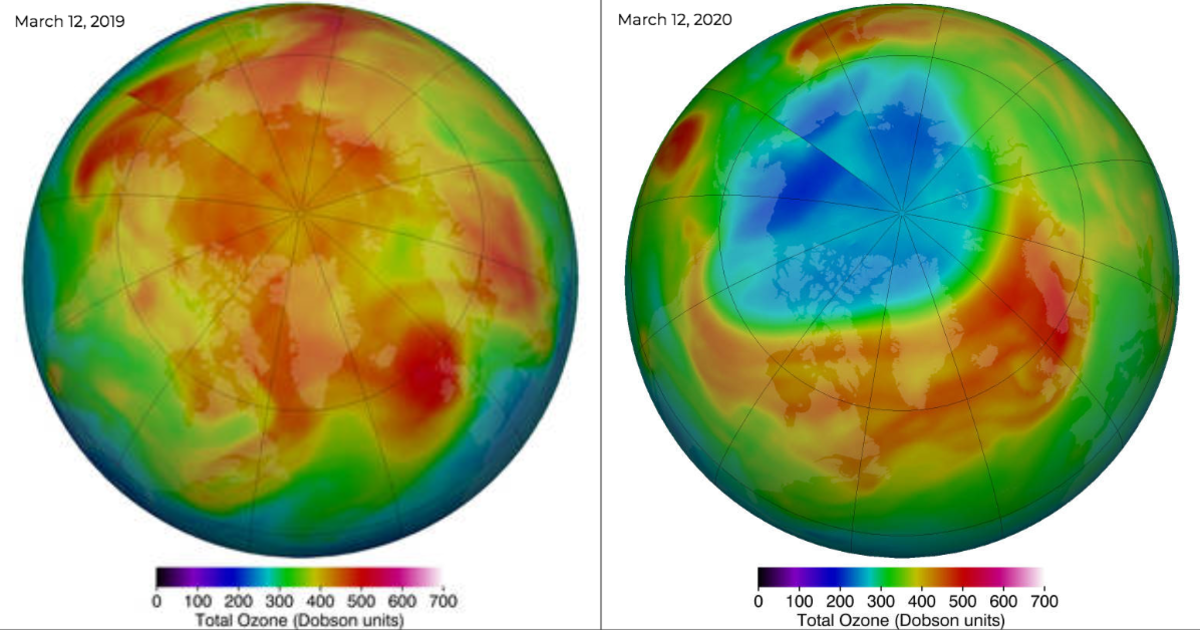The ozone ‘hole,’ once thought to be the most serious threat to planetary life, is now expected to be completely repaired by 2066, according to a scientific assessment.

What is Ozone and Ozone Layer?
- An ozone molecule is made up of three oxygen atoms rather than two (the oxygen we breathe, O2, accounts for 21% of the atmosphere).
- It exists in trace amounts in the atmosphere (less than 0.001%), but its effects are significant.
- The interaction of ultraviolet (UV) radiation from the Sun with O2 molecules produces ozone molecules.
- Because UV radiation is more intense at higher altitudes where the air is thinner, most ozone is produced in the stratosphere, giving rise to the ozone layer.
- The ozone layer, which contains more than 90% of all atmospheric ozone, extends between about 10 and 40 kilometres altitude, peaking at about 25 kilometres in the Stratosphere.
Why need Ozone Layer?
- The ozone layer is critical for life on Earth because it absorbs the most harmful type of UV radiation, UV-B radiation with a wavelength of between 280 and 315 nanometres.
- When UV radiation is absorbed by ozone in the stratosphere, it heats the surrounding air, resulting in a stratospheric temperature inversion.
What exactly is an Ozone Hole?
- For the past few decades, chemical reactions involving chlorine and bromine have caused ozone in the southern polar region to be rapidly and severely destroyed during the spring in the Southern Hemisphere.
- The Dobson Unit (DU) is the standard measurement unit for total ozone.
- Chlorofluorocarbons (CFCs), halons, and carbon tetrachloride are the chemicals involved in ozone depletion.
- They are used in a variety of applications such as refrigeration, air conditioning, foam packaging, and the manufacture of aerosol spray cans.
- The “ozone hole” refers to the ozone-depleted region.
- Tropical Ozone Depletion
- The ozone hole, according to the study, is located at altitudes of 10-25 km above the tropics.
- According to the study, this hole is roughly seven times the size of Antarctica.
- It also appears throughout the year, as opposed to Antarctica, which is only visible in the spring.
- Since the 1980s, the gap has grown significantly. However, it wasn’t discovered until this study.
What caused an ozone hole in the tropics?
- Cosmic rays, according to research, are another cause of ozone depletion.
- The role of chlorofluorocarbons (CFCs) in ozone depletion is well documented.
- A low temperature of 190-200 Kelvin was recorded in the tropical stratosphere (K).
- This could explain why the tropical ozone hole forms year after year.
Source: https://indianexpress.com/article/explained/ozone-hole-filling-up-now-antarctica-montreal-protocol-greenhouse-gases-climate-change-8374040/#:~:text=The%20ozone%20'hole'%2C%20once,long%20time%20to%20heal%20completely.
